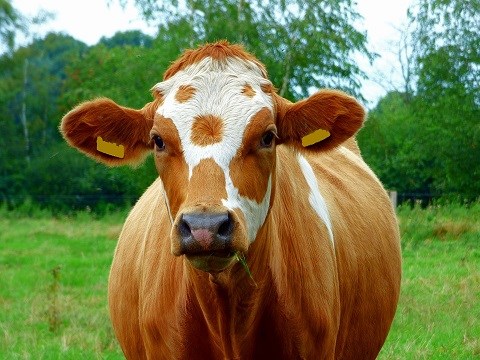Contact
Elisabeth Maria Andrée O'Hara
Doctoral Student, Education Administrator at the Department of Animal Nutrition and Management; Nutrition Ruminants
Telephone: 018-671634
E-mail: lisa.ohara@slu.se

Optimal body condition in early lactation is generally accepted as a prerequisite for good reproductive performance. Examination of milk progesterone profiles offers an objective method for characterization of postpartum ovarian activity in dairy cows.
The present study investigated the relationship between body condition after calving, some metabolic parameters in blood plasma, and fertility, as reflected by milk progesterone profiles in the two dairy breeds Swedish Red (SR) and Swedish Holstein (SH).
Multiparous dairy cows (n = 73) of SR and SH breeds were selected and divided into three groups based on their body condition score (BCS) after parturition. Selected plasma metabolites were determined, milk progesterone profiles were identified and body condition was scored. Over-conditioned cows and atypical progesterone profiles were more common among SR cows. Insulin sensitivity was lower and IGF 1 higher among SR cows. Insulin was positively related to body condition, but not related to breed.
Atypical progesterone profiles were more common and insulin sensitivity lower in SR than in SH cows, but the SR breed had a higher proportion of over-conditioned SR cows. It is reasonable to assume that breed differences in body condition contributed to these results.
http://actavetscand.biomedcentral.com/articles/10.1186/s13028-016-0251-2
O'Hara, L. A., Båge, R and Holtenius K. 2016. The impact of body condition after calving on metabolism and milk progesterone profiles in two breeds of dairy cows. Acta Veterinaria Scandinavica, 2016 58(Suppl 1):68.
Elisabeth Maria Andrée O'Hara
Doctoral Student, Education Administrator at the Department of Animal Nutrition and Management; Nutrition Ruminants
Telephone: 018-671634
E-mail: lisa.ohara@slu.se